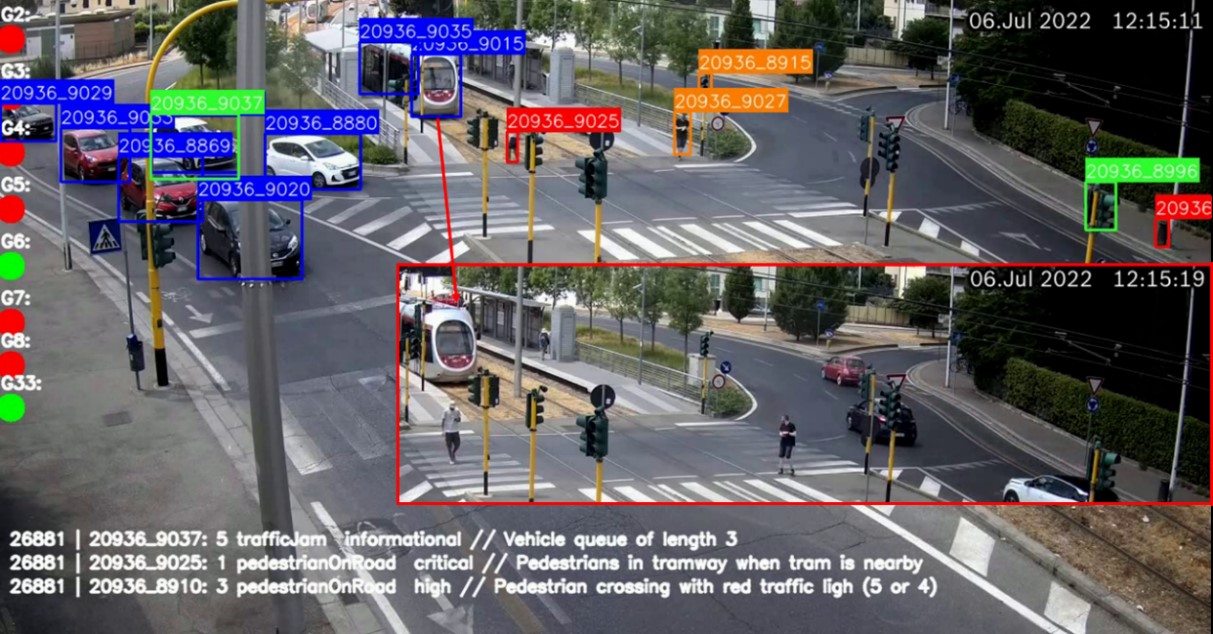In urban areas, public and private transport are continuously interacting, and high capacity public transport is typically granted a higher priority. However, such policies do not take into account the specific traffic dynamics of different scenarios. The increasing deployment of IoT solutions is providing cities with a dense network of sensors collecting different types of data that can be used to monitor performance of mobility services and their impact (traffic flows, travel times, air quality, etc.). ELASTIC uses this information to enhance the quality of the city traffic management through the application of extreme data analytics, providing valuable outputs for both users and operators that enables them to:
(1) identify critical situations (e.g., vehicles crossing the intersection with the tram line despite having a red traffic light),
(2) optimize the local traffic regulation strategies (e.g., reduce the waiting time of cars at tram crossings through improved light priority management, or slow down trams to reduce a queue of waiting vehicles under traffic congestion, etc.)
The ELASTIC framework for enhancing the interaction between different transportation networks (i.e., public and private) through real-time analytics has been used as a reference for the Florence tramway system for the implementation of new features and mobility services in the future.

